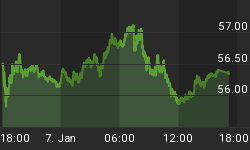There is a surprising degree of middle of the road uniformity amongst most of the surveys that report the percentage of stock market bulls and bears. Amongst the 12 surveys monitored by Investors Internet Inc., eight are bullish, four are bearish and one is split down the middle. The FIFTI Index of free advice from independent financial newsletter writers prepared by www.InvestorsInternet.com is showing 41% bulls, and 36% bears. Most of the other surveys are not too dissimilar.
The ambivalence is due to the mixed signals being put out by the market and the economy. Neither the bulls nor the bears have taken control of the market. Last week the Dow and the S&P 500 were down and the Nasdaq up. The sharp move up on Wednesday was matched by an equally sharp move down on Thursday. The good economic news is regarded as bad, and the bad as good, because the good news about a strong economy will only encourage the Fed to continue increasing interest rates, which is bad news. As a result, many experts say the current market is dangerous and admit that this is a difficult time to forecast the future direction of the market.
The approximately equal number of bulls and bears does not mean that there are not strong opinions about which way the market is going to break out of its range-bound activity. www.InvestorsInternet.com monitors free information from the Internet (FIFTI) and this past weekend some remarkable observations have been made. For example:
George Slezak reported that last week's Commitments of Traders Report shows that Commercials have a net long position in stock index futures that is their largest in five years. Commercials are the ones that are usually correct.
Joe Duarte reported that the latest figures (which are two to three weeks old) for NYSE insiders and Specialists show aggressive buying and record low short selling. The insiders and Specialists are usually correct.
Against that, there is John Hussman making the point that the market has unusually unfavorable valuations and clearly unfavorable quality of market action so the risk is heightened. As he says, he doesn't talk like that often.
The Canadian National Bank Financial cannot see how the U.S. consumer will be able to continue spending at the same rate and predicts profound, mostly dire, implications.
In general, the independent financial newsletter writers agree that the market is oversold, and for that reason alone it could bounce at any time. October is notorious for being a bad month for the market, and November is often the start of the market rising until the "Go away in May" adage applies.
But this year is different the bears say.
There's the economy, which is facing rising inflation, tighter monetary conditions and the continuing risk of geopolitical events. There is now talk about the Fed raising the interest rate to 5%.
There's the consumer, who is losing confidence, facing higher energy prices and high levels of debt, has no money left to draw out of the house and is increasing spending faster than the growth of income. There is talk about consumer spending dropping to a growth level below 2%, which it has not done for 15 years.
There's company profits, which are at levels that cannot be sustained. Though this earnings season is good the forecasts for the next quarter and 2006 are not so bright.
There's the market, whose internals have been bad recently and whose indexes are forming bearish chart patterns.
"Yes, but..." say the bulls.
The economy is strong. Housing has not crashed as many predicted. Unemployment is low. Overseas central banks are still buying the dollar. Energy prices are receding. Company profits are excellent. Market internals are at the lows that produced rallies before. Chart patterns often give false signals. The smart money is buying not selling.
The Dow has been in the range 9,700 to 11,000 since November of 2003. Except for a brief spell in the middle of 2004 the Nasdaq hasn't been much outside of 1,900 to 2,200. This year the major market indexes are down just a few per cent. No wonder it is difficult to see what catalyst will take them outside their current ranges.
















